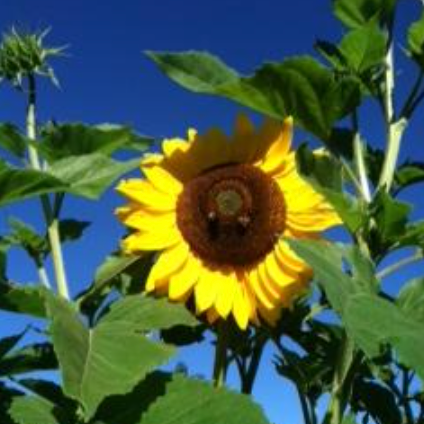Spring comes in suddenly across the northeast, but unlike the saying, "April showers bring May flowers," here, April showers water in our gardens! But soon enough, bright blooms will be dotting the Northeast as plants meet spring with a rainbow of greetings. Pollinators and people all across the country will welcome them like long-lost friends.
When deciding which of these cheerful blooms to invite into your garden, consider more than looks and smells. Many flowers are great additions not only to our vases, but to kitchen tables and medicine cabinets too. For a general culinary guideline, consider fresh flowers as exotic, colorful prizes hidden in salads, drinks, desserts, vinaigrettes, and jellies and use them in the same proportion as a seasoning. Dried, they can be saved for wintertime teas.
Here’s an (incomplete) list of edible flowers to get you started. Not included are veggie and herb blooms, many of which – such as squash blossoms and garlic scapes - have already found a place in our meals and at farmers’ markets. Included are plants that are most often grown solely for their good looks:
- Johnny Jump Ups are some of the first colorful blooms of the season.
- Cornflower or Bachelor Button is sweet to spicy and clove-like
- Flax (Blue and Scarlet) produces highly nutritious seeds
- Borage blooms taste a lot like cucumber (And, Erin makes delicious cookies with them!)
- Breadseed Poppies are called "bread seed" for good reason. Each flower is a prolific producer of seeds which are made to be baked into pastries
- Calendula is (highly medicinal and) tastes tangy or peppery; it’s sometimes used as a local substitute for saffron
- Marigolds, close relatives of Calendula, can be a bit pungent, but at their best, have notes of citrus. Out of the ones in our catalog, the Sparky French, is a more desirable edible over Crackerjack Mix African
- Celosias are related to amaranth. Their nutty blooms (of both Forest Fire Scarlet Celosia and Crested Mix Celosia) are highly nutritious and great tucked into stews and curries
- Evening Primrose is mildly sweet and reminiscent of jasmine
- Forget-Me-Nots have no memorable taste, but look real pretty
- German Chamomile is great in tea or tincture and has a strong floral and sometimes a touch bitter taste
- Love in a Mist produces edible seeds that taste like nutmeg
- Love Lies Bleeding is an amaranth too. It has nutty leaves and beautiful seeds which are a desirable, ancient grain great for baking or popping
- Daisies have a mild tartness
- Hollyhock is a somewhat bland, but very pretty addition to salad
- Nasturtiums (both Trailing and Variegated) are some of the most popular edible flowers for good reason: they are prolific bloomers with spicy, peppery blossoms and leaves. At the end of their season, they make tiny green berries, which, when pickled, are great substitute for capers
- Sunflowers have the best seeds—that’s no secret to birds or humans, but also edible petals and flower buds which can be steamed like artichokes when unopened
- Echinacea is somewhat bitter, with a powerful medicinal history. It’s been used in treating headaches, toothaches, sore gums, mumps, arthritis, indigestion, pain, tumors, malaria, hemorrhoids, eczema, psoriasis, boils, burns, cold sores, bronchitis, tonsillitis, meningitis, tuberculosis, and whooping cough. Native Americans used it as an antidote for bites and stings from venomous creatures. It’s an immunity booster and a blood purifier. Its effectiveness in fixing various ailments fluctuates drastically, but its benefits probably outweigh the bitter taste.
Plants for a Future is a growing database of edible and medicinal plants and a good resource for continuing to explore the nutrients and uses of edible flowers.







